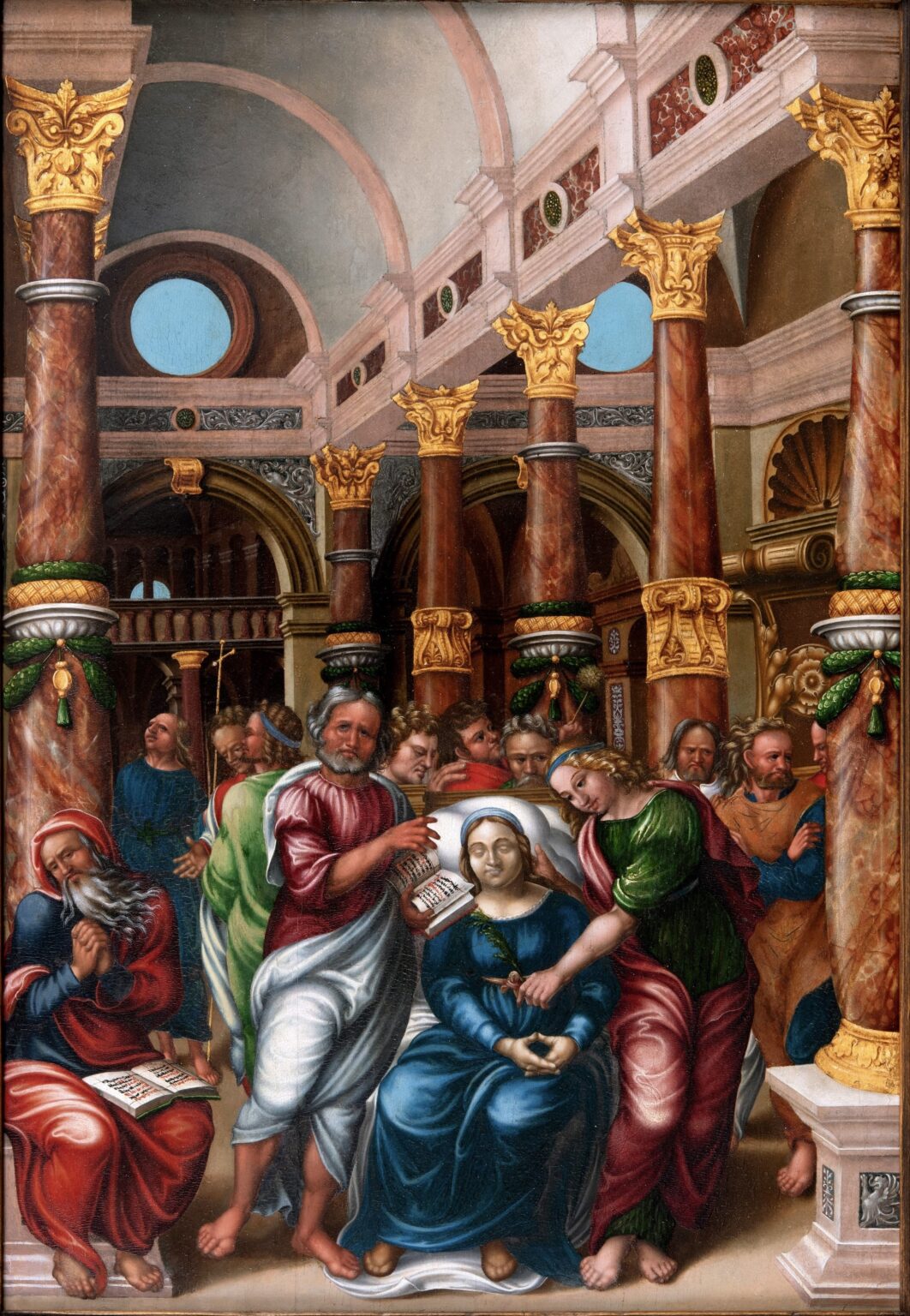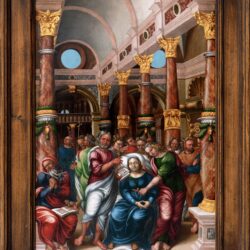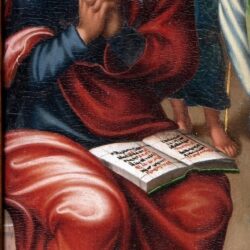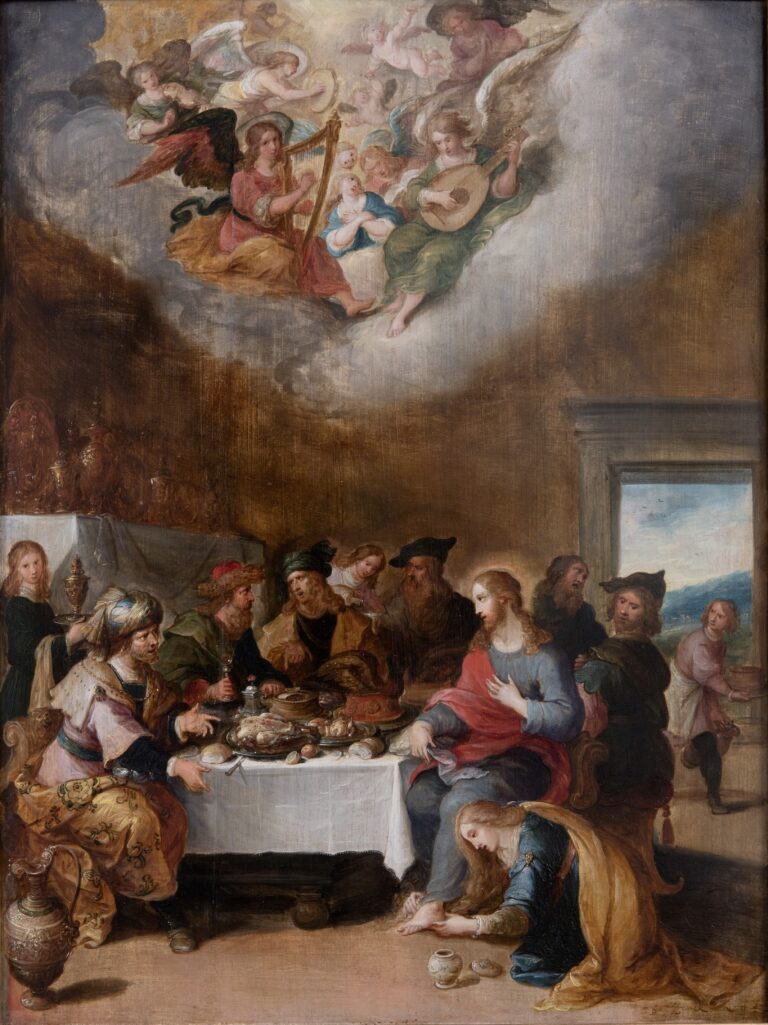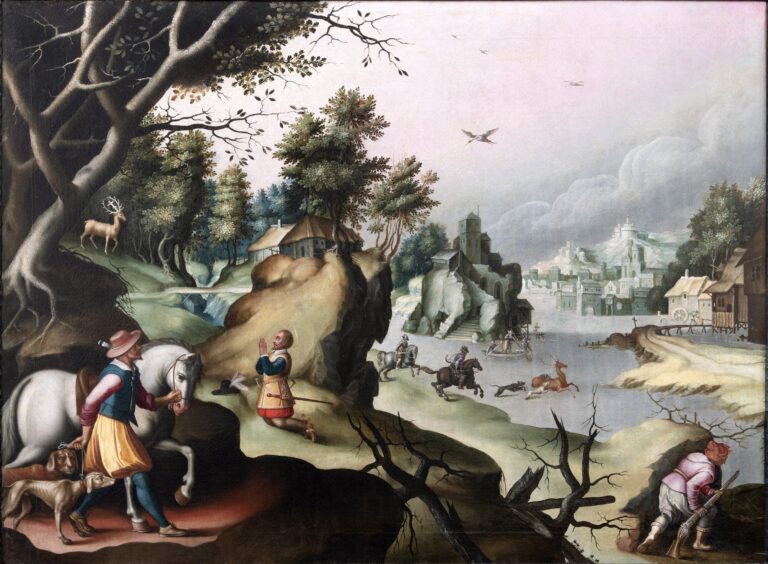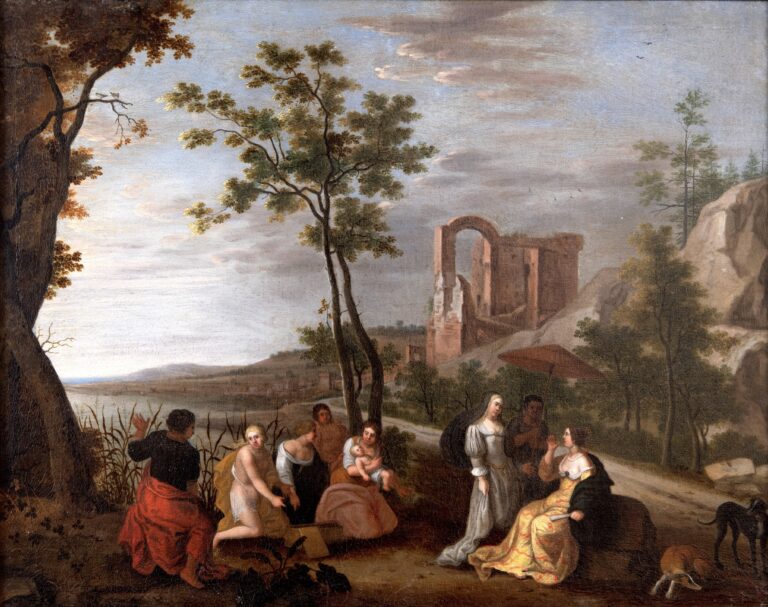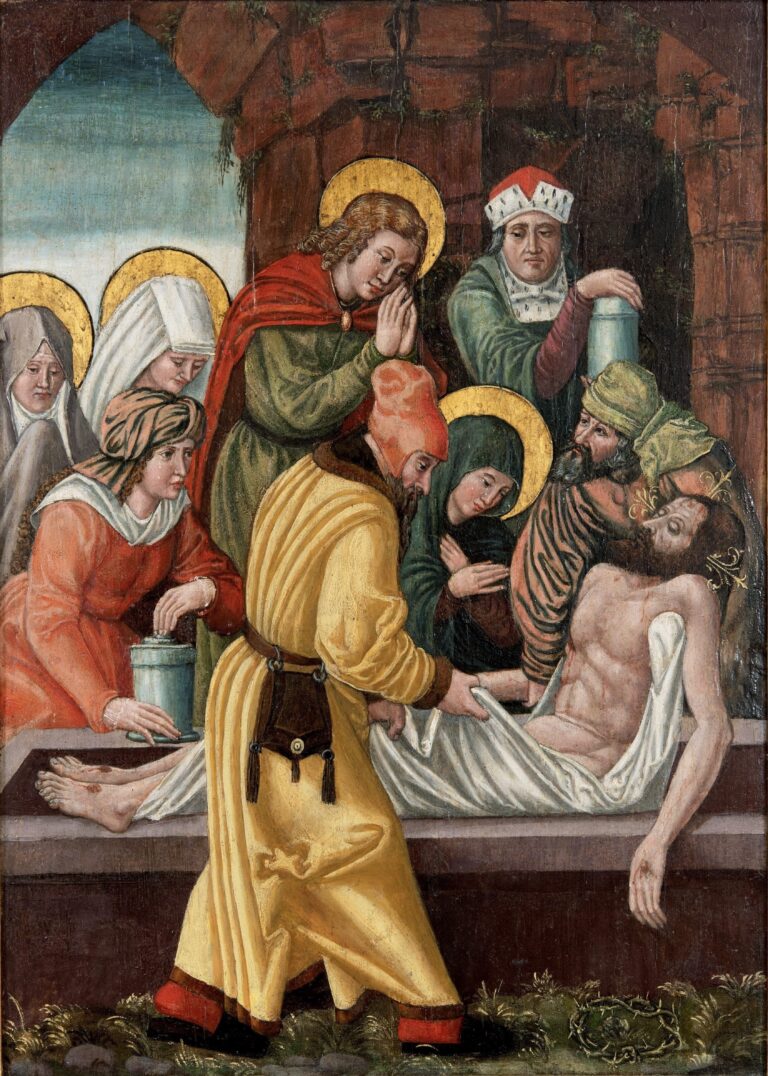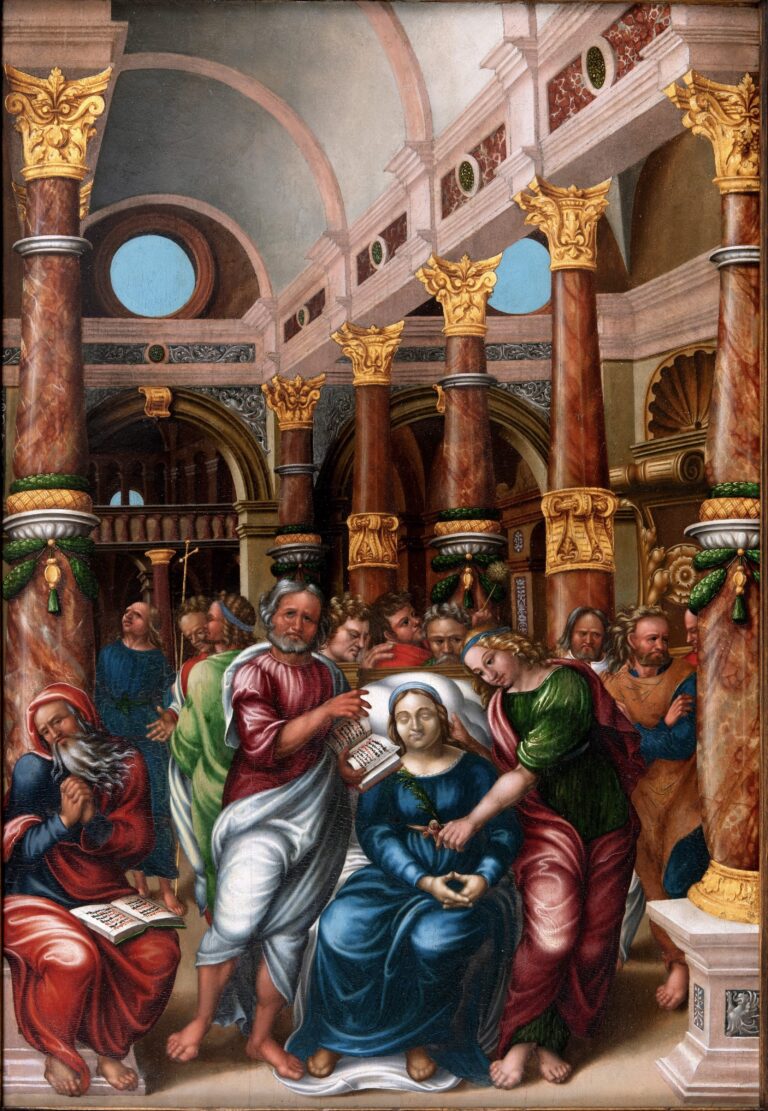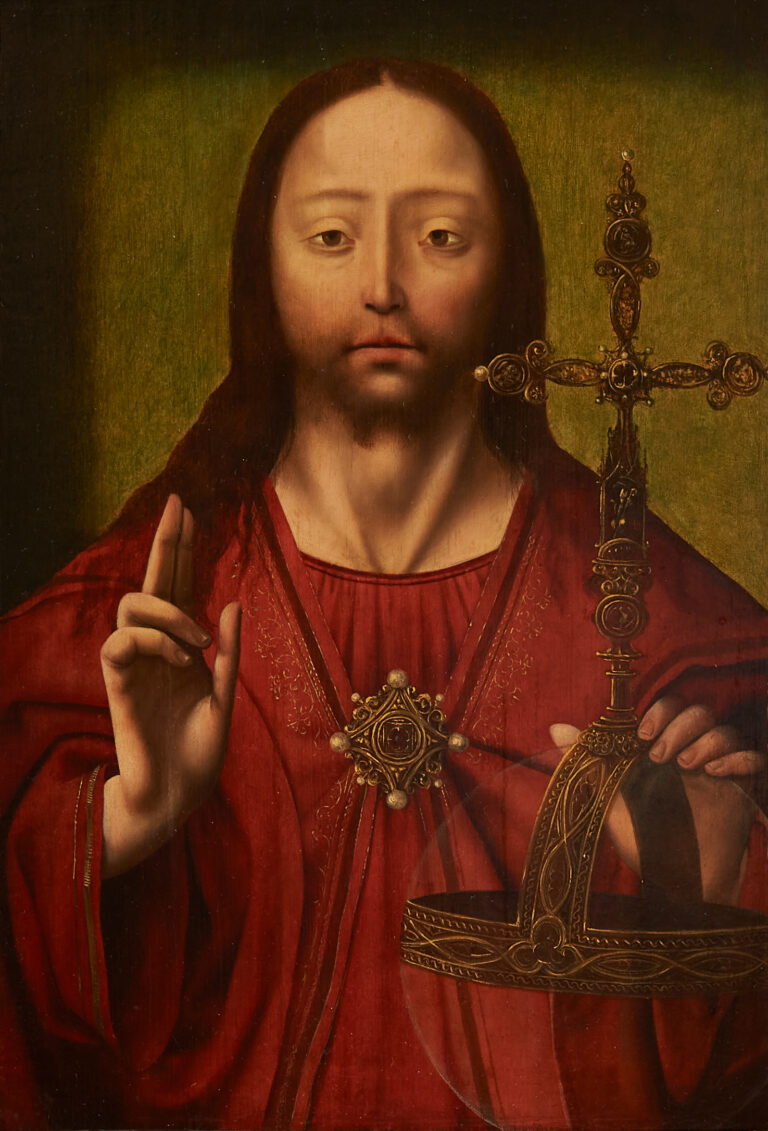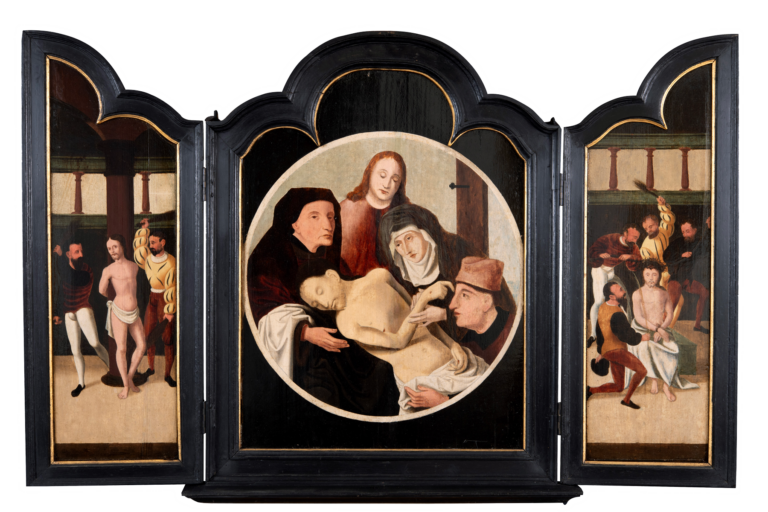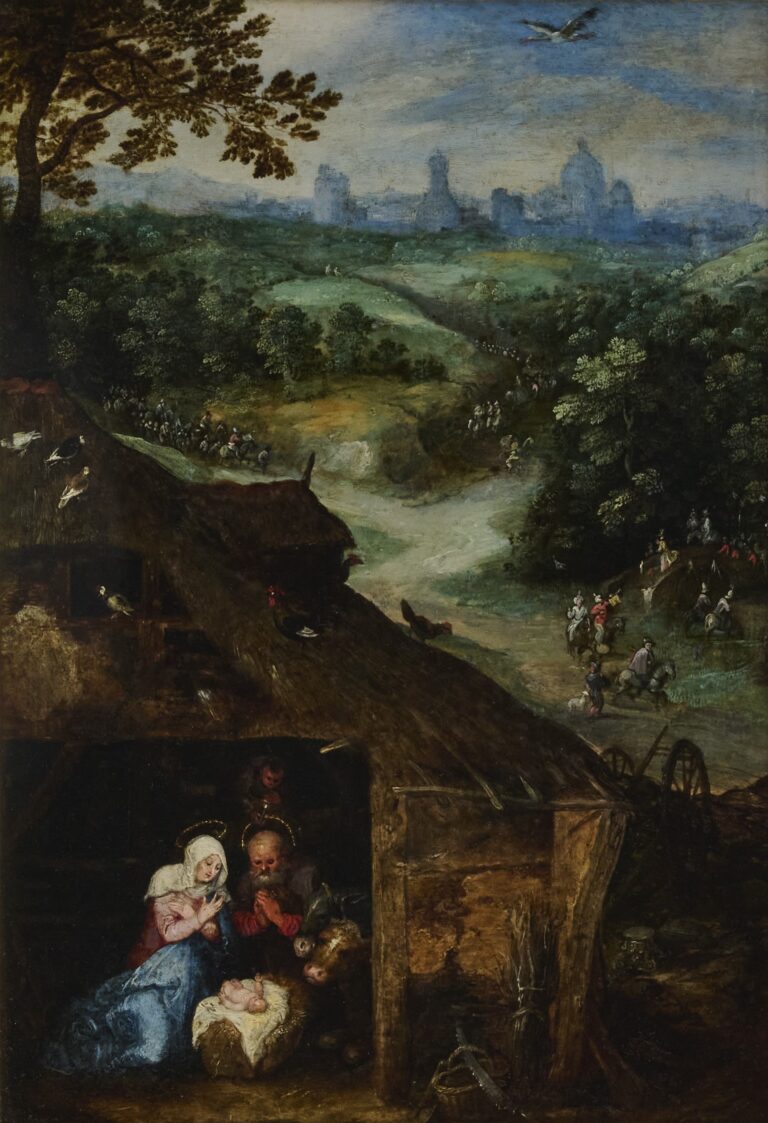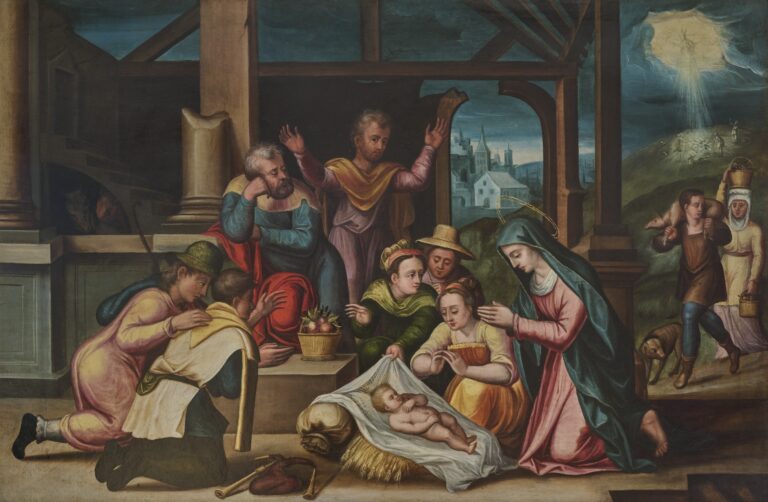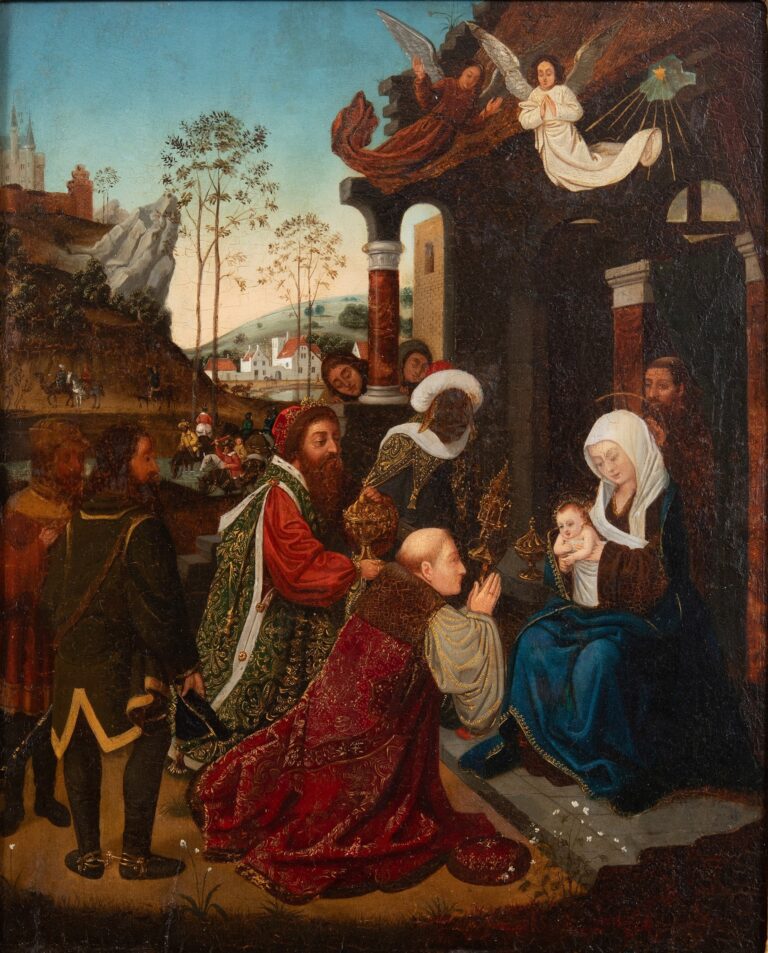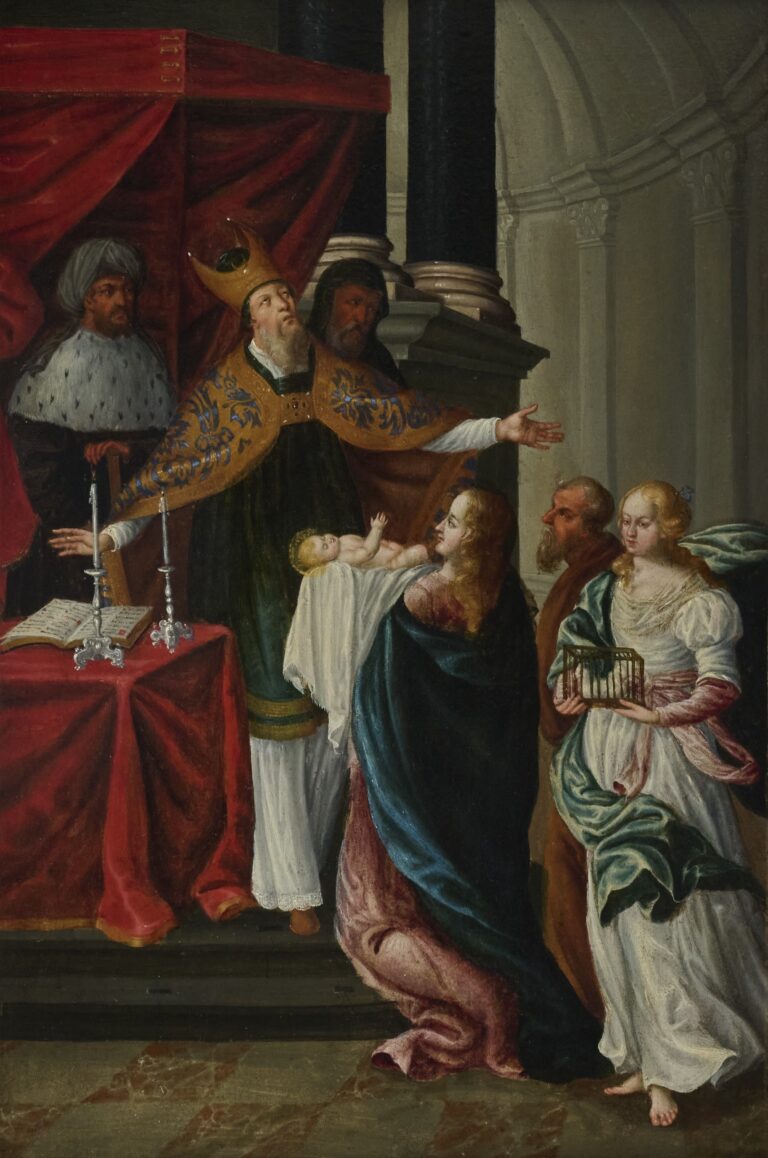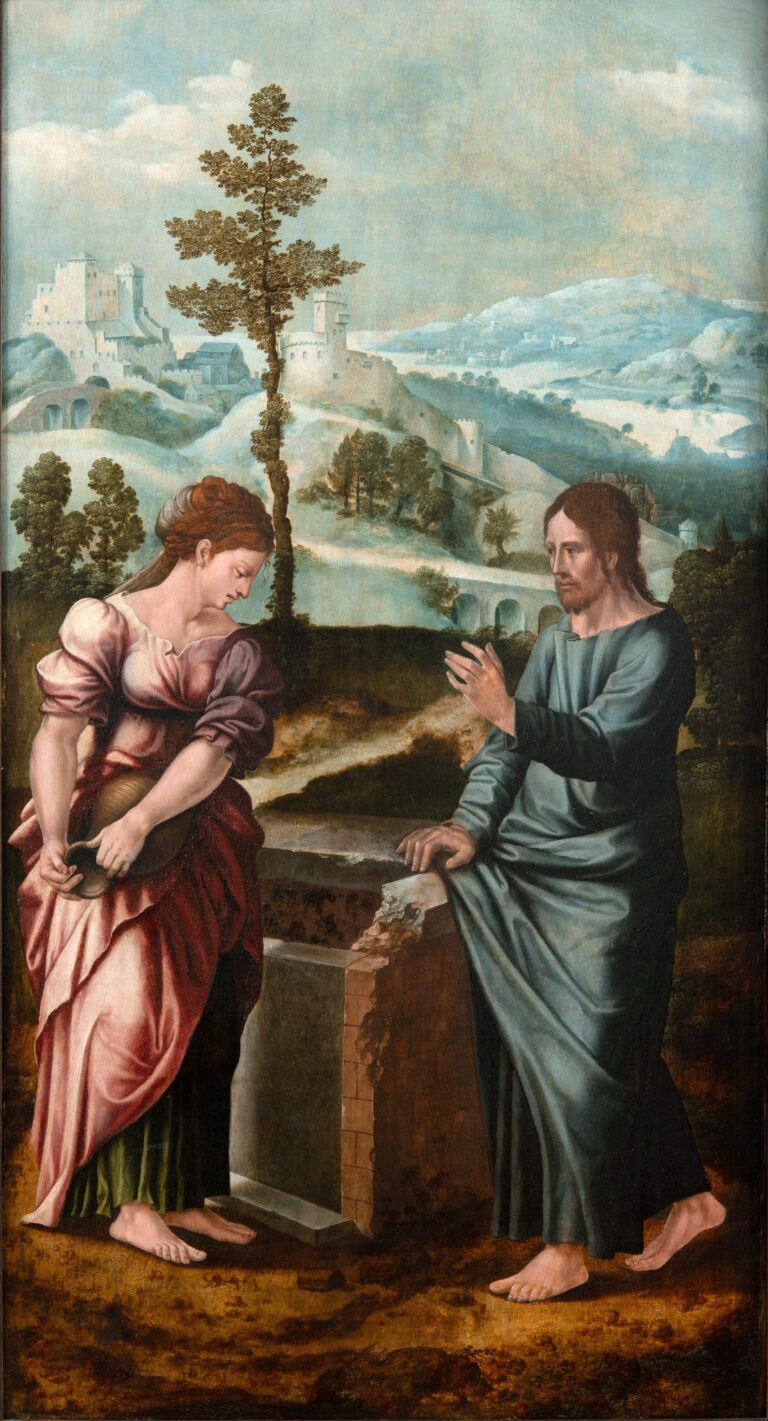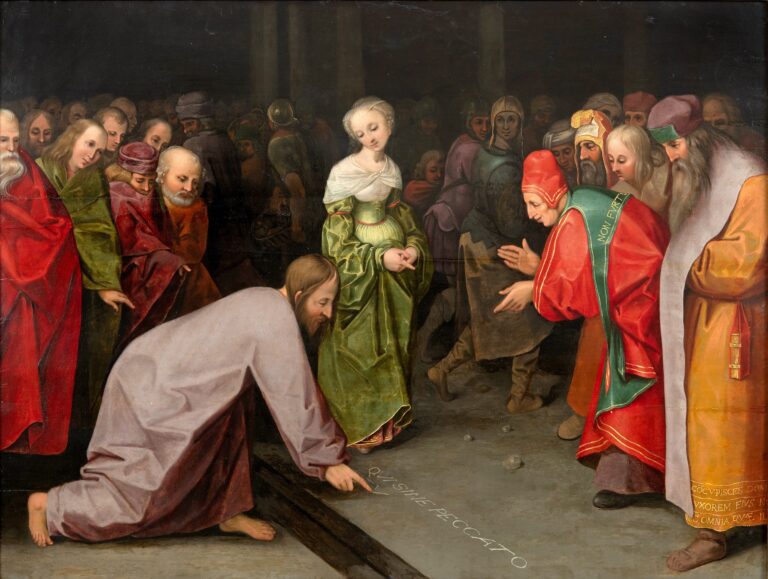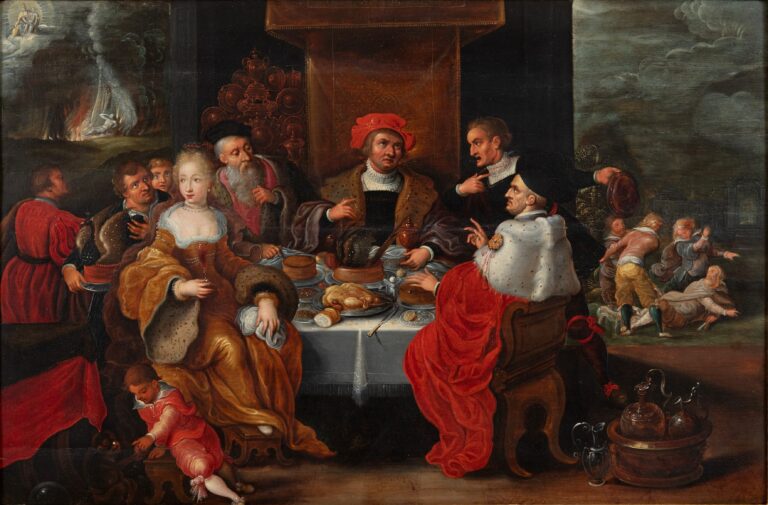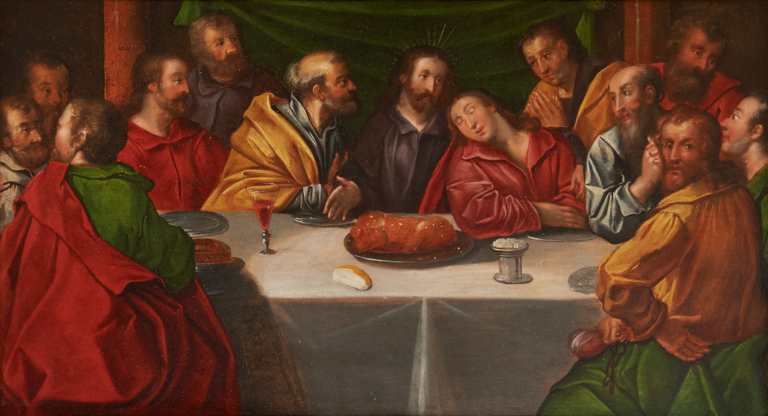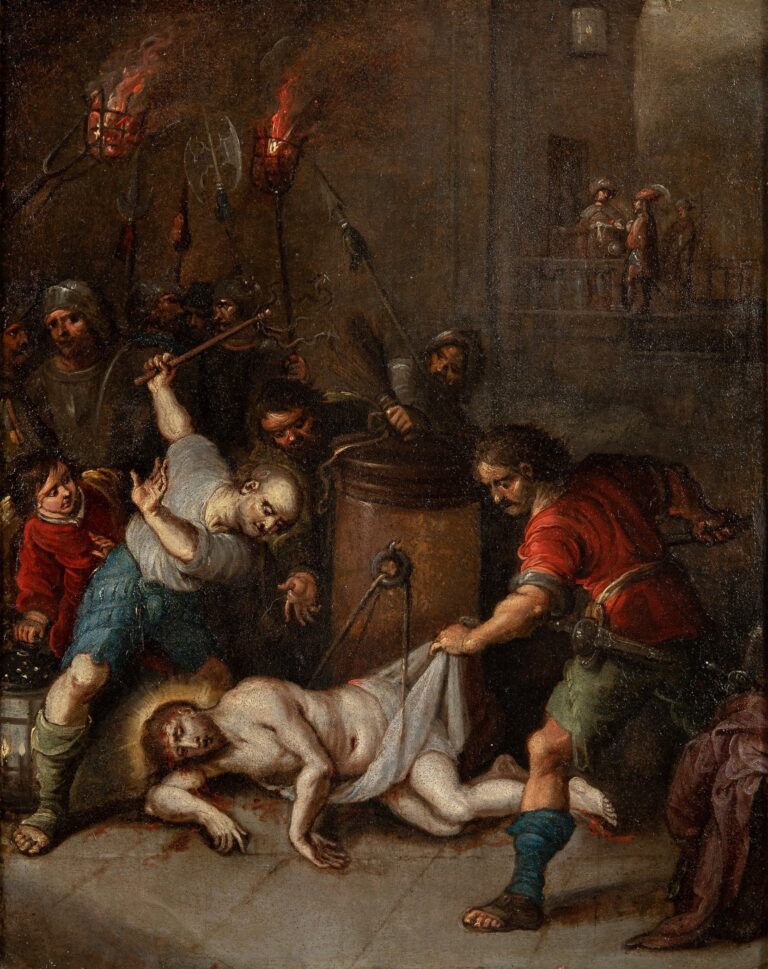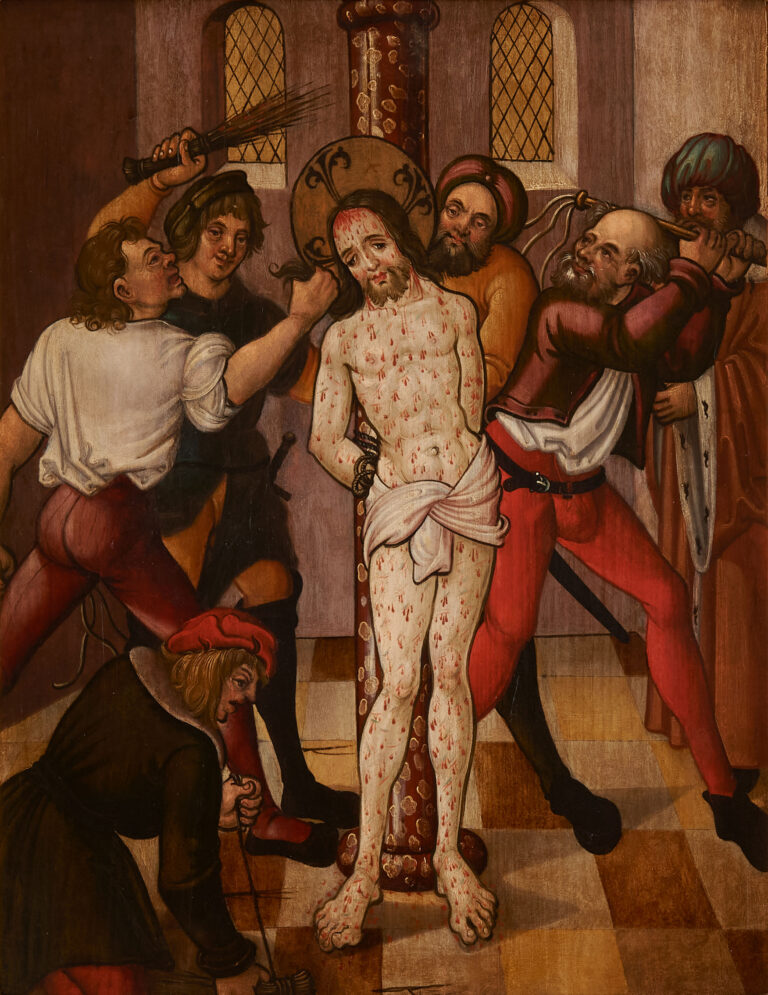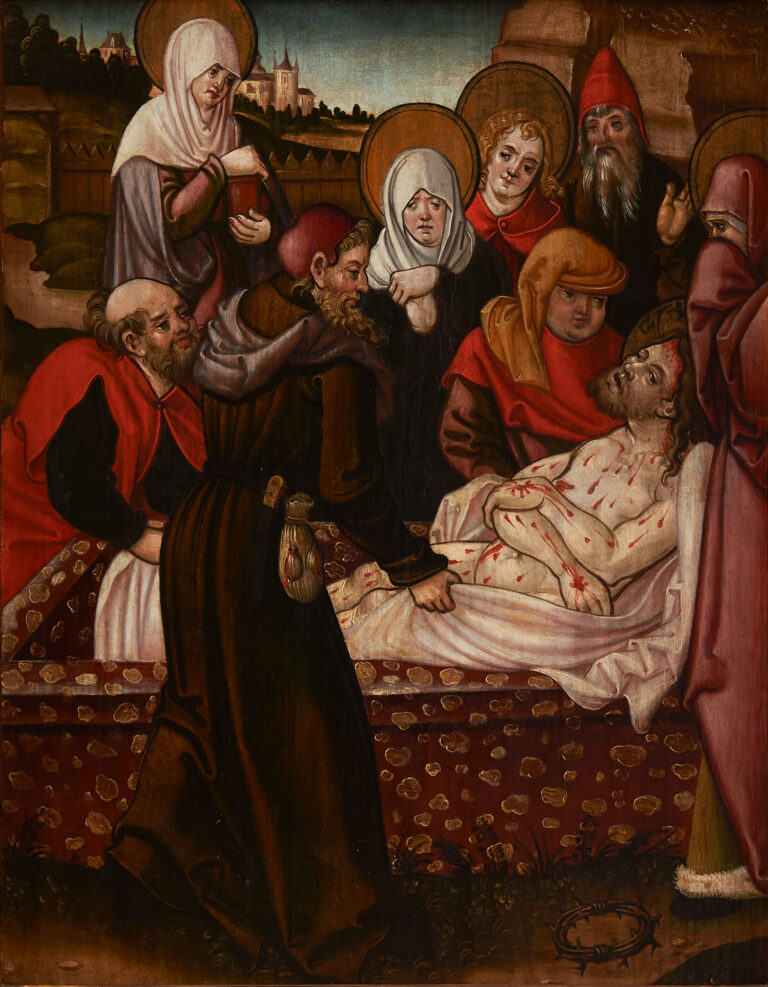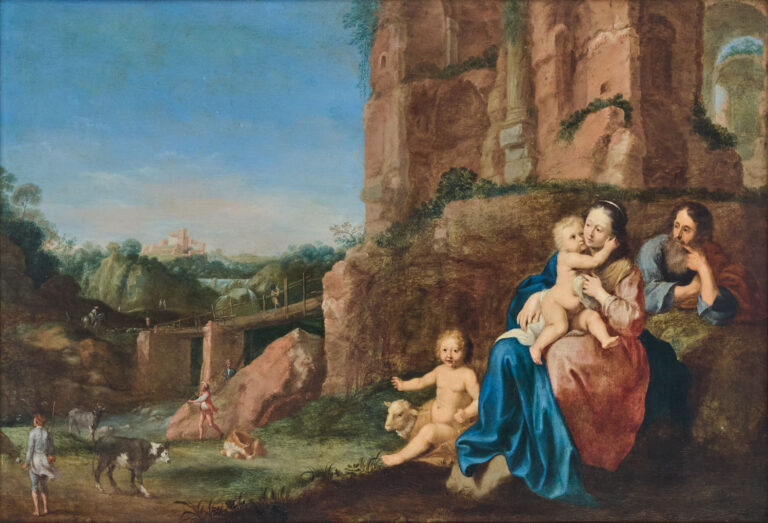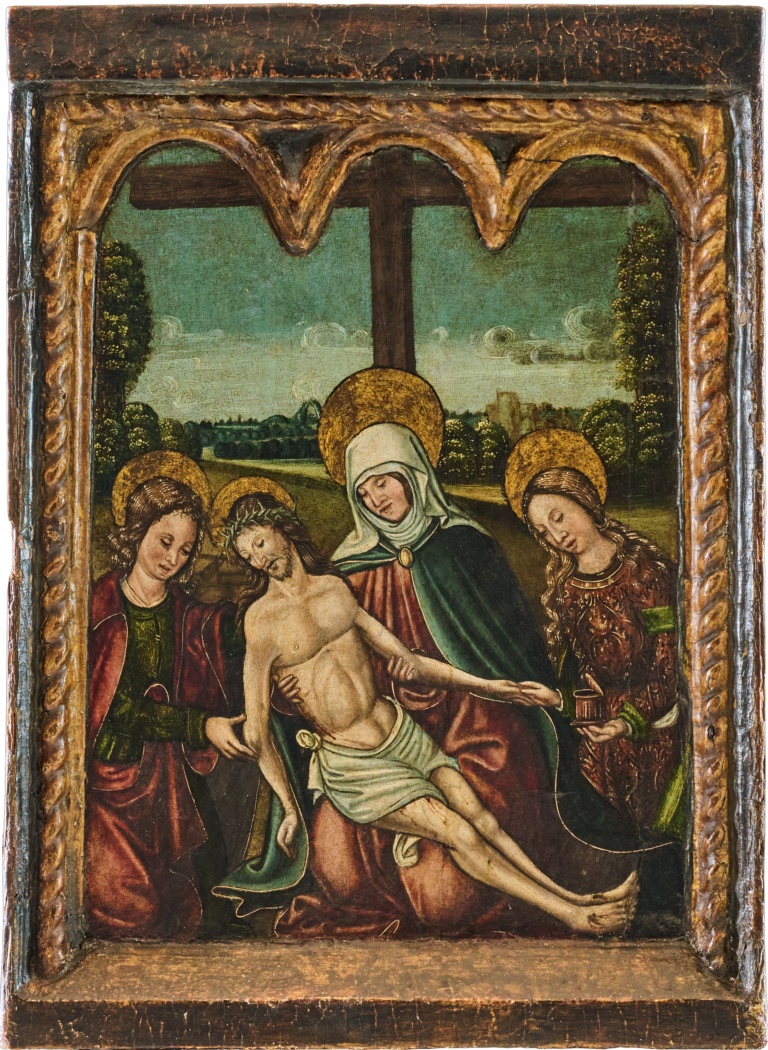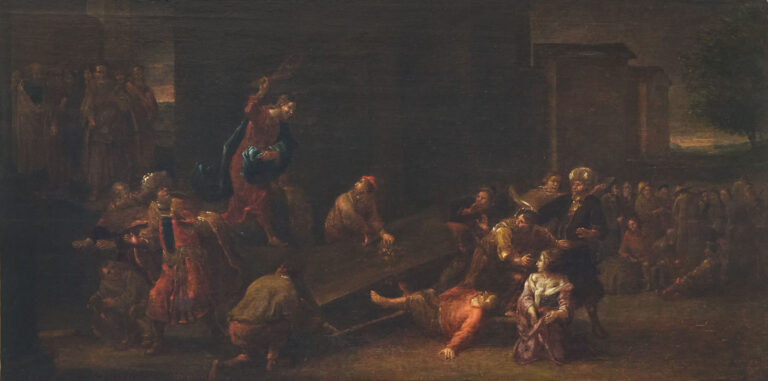Home » Collection » Dormition of the Virgin
Dormition of the Virgin
Bavarian School, c. 1530
And then said John: O would God that all my brethren the apostles were here…. And as he said that, all the apostles were ravished with clouds from the places where they preached, and were brought before the door of the blessed Virgin Mary.
Jacobus de Voragine, The Golden Legend
The Death of the Virgin was a popular subject for Renaissance painters. The paintings are often called Dormition (“falling asleep”) of the Virgin, as by tradition she did not die a traditional human death.
The story of the Dormition is not to be found in the Bible, but rather is part of the many extra-Biblical stories that accumulated during Late Antiquity and the Middle Ages as Christianity spread throughout the Levant and Europe. Many of these stories, along with legends of Christian Saints, were compiled into a book (The Golden Legend) by Genoese Archbishop Jacobus de Voragine in the 13th Century. We can think of it as a compendium of Christian fan fiction. These accounts were important to Renaissance Christians and therefore important subjects for painters who were keen to appeal to their customers’ tastes.
The Virgin, of course, occupies centre stage in the composition, surrounded by the apostles. She is older than typically depicted at other scenes (e.g., Christ’s death), and we can imagine our scene takes place decades later. Her eyes are closed and she wears a serene smile, as if ready to meet God.
According to the Golden Legend, the Apostle John, to whom Jesus had entrusted his mother’s care before his death (John 19:26-27), lived near Mary and the first to arrive at her side. He then prayed to God that his fellow apostles would also be there; and so they were transported from their ministries far and wide.
Also as described in The Golden Legend, an Angel to Mary’s left hands her a palm branch, which the Apostles were to carry in her funeral procession.
To Mary’s right is the Apostle Peter. He wears a sorrowful expression, with furrowed brow. He looks directly at us, holding a prayer book in one hand and gesturing to the Virgin with the other; he is officiating at the Service, and also welcomes us into scene.
There are 11 apostles in total: only Thomas is absent; by tradition he arrived late, missing the Virgin’s passing and characteristically doubting her later Assumption into Heaven. Each of the Apostles is painted as an individual, with distinct features; some have flowing beards, others clean shaven; some have long flowing locks, others with shorter, curlier hair. Were any of these faces based on real people known to the painter? Is one of them the patron who commissioned the work? Or perhaps the painter has inserted a self-portrait into the scene?
A sensitive restoration has removed multiple layers of varnish, revealing the vivid colours of the original painting: the browns of the marbled columns, tunics of green and various shades of red, and the traditional blue of the Virgin’s clothing.
Our painting is an outstanding example of a Renaissance Dormition. An old label attributes it to Jörg Breu the Elder (1475/80-1537), who was a leading Bavarian painter active in the early 16th Century. Breu was known for his vibrant colours, especially in his later work. While there are stylistic similarities between our painting and Breu the Elder’s, our painting is more likely from the hand of another outstanding artist working in Bavaria around the same time.
Our artist was clearly influenced by Italian models, as many Bavarian painters were in the early 16th Century. He also uses perspective to frame the scene, as his Italian counterparts often did. Our artist’s skills in perspective painting are on full display in this canvas. Above the Virgin, Angel and Apostles we find our eye drawn to the back of the building where portals are open to clear blue sky: a glimpse of the heaven where God will soon receive the Virgin.
Provenance: Bochmann Collection, Meerane, Germany; later part of a Bavarian Private Collection
